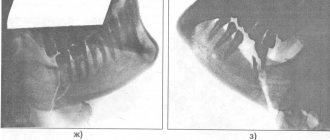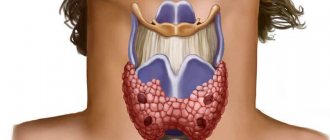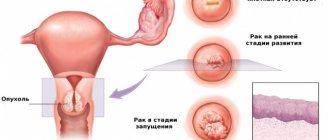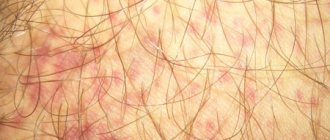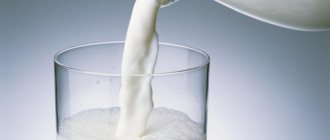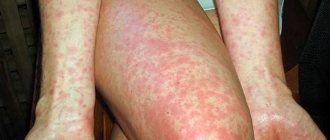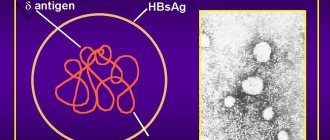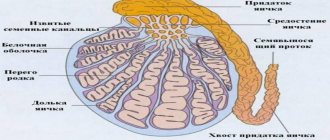A woman’s breasts are not only one of the main advantages and adornments of a woman, but also an indicator of her health; the mammary glands can tell a lot about the state of the body. Quite often, it is the female breast that suffers from various diseases, as it is directly susceptible to the influence of hormones. One of these ailments is mastopathy.
In this article we will talk about the symptoms and signs of breast mastopathy. You will also learn what mastopathy is and how it manifests itself, photos.
What is mastopathy and why does it occur?
Mastopathy in women is a chronic disease accompanied by the proliferation of glandular breast tissue. In the absence of treatment and non-compliance with doctor's instructions, a benign neoplasm can undergo malignant degeneration. The following reasons contribute to the occurrence of mastopathy:
- hormonal disorders associated with menopause (the amount of sex hormones that maintain the normal condition of the mammary glands decreases);
- prolonged stress and psycho-emotional overload;
- dysfunction of the pituitary gland and hypothalamus;
- changes in the activity of the thyroid gland or adrenal glands;
- disruption of blood supply to the brain;
- poisoning of the body with waste products of bacteria and viruses;
- liver dysfunction;
- injuries to the thoracic area.
There are provoking factors under the influence of which the risk of mastopathy in mature and elderly women increases many times over. Such reasons include:
- artificial or spontaneous termination of pregnancy;
- the presence of chronic diseases (diabetes mellitus, pancreatitis, metabolic disorders);
- obesity;
- refusal to breastfeed a child;
- genetic predisposition (some forms of mastopathy are transmitted through the female line);
- late onset of the first pregnancy (after 35 years);
- endocrine disorders;
- early puberty (beginning of menstruation before age 12);
- smoking and drinking alcoholic beverages;
- previous surgical interventions in the thoracic area;
- living in an unfavorable environmental environment;
- poisoning of the body with toxic substances;
- diagnosed cases of mastitis;
- prolonged exposure to ultraviolet rays, frequent visits to the solarium;
- irregular intimate life.
Mastopathy: symptoms
The primary stages of mastopathy can be practically asymptomatic. Sometimes mild breast tenderness appears before menstruation.
In the future, the pain may intensify, the mammary glands become rough and slightly enlarged, and when palpating them, lumps can be felt.
Attention: At the first signs of mastopathy in women, treatment should not be delayed; it is necessary to urgently contact specialists for a complete breast examination.
Symptoms and signs of breast mastopathy - photo:
And here is a diagram-photo of self-diagnosis signs of mastopathy in women:
What happens if treatment is delayed?
How does mastopathy manifest in women? It happens that women deliberately do not go to the doctor or simply try not to notice the signs and symptoms of breast mastopathy. Most often, there is simply no time or the pain is not so severe, and the woman herself does not even know that such a disease exists.
In this case, mastopathy begins to progress. One of the signs of mastopathy in women includes discharge from the breast. Also, the lymph nodes under the armpits may become enlarged, and the shape of the nipples and the bust itself may change.
On our website you can read more about the symptoms of mastopathy:
- pain;
- temperature increase;
- enlarged lymph nodes;
- discharge from the chest.
Read also how to diagnose mastopathy using ultrasound here.
You should not delay it any further, since mastopathy is considered a precancerous disease , and although it rarely reaches the stage of oncology, it is still recommended to consult a doctor at the first ailment, since some symptoms may indicate other, much more dangerous ailments.
We will find out further how manifestations can progress and what other symptoms of mastopathy appear.
Types and symptoms of breast disease
There are 2 forms of breast disease:
- Diffuse. Accompanied by a uniform proliferation of connective tissues, leading to the formation of small nodules. They are small in size and cannot be felt during independent breast examination. Diffuse mastopathy can be fibrous, fibrocystic and mixed.
- Nodal. With this form of the disease, large nodes form in the tissues, some of which reach the size of a walnut. Nodular mastopathy is characterized by a high risk of developing breast cancer.
The clinical picture of the disease includes the following symptoms:
- mild pain in the mammary glands, intensifying as benign tumors increase;
- swelling of the mammary glands (palpation reveals the presence of compactions in the tissues);
- asymmetry of the mammary glands caused by diffuse proliferation of tissue in one breast;
- tuberosity of the skin associated with uneven growth of fatty tissue;
- retraction or inflammation of the nipples.
The patient's general well-being is rarely disturbed. Associated signs appear when pathological changes spread to large areas of healthy tissue. In this case, there is an increase in body temperature, chills and pain spreading to the upper extremities.
Causes
At the age of 40, a woman’s body begins to prepare for menopause, which means significant hormonal changes occur.
The process of transformation of glandular tissue into fat occurs unevenly, and this can lead to lumps, cysts or nodes in the mammary gland.
The provoking factors for the development of mastopathy after 40 years are the following::
- late birth - after 35 years;
- abortion after 35 years;
- infertility;
- stress;
- obesity.
Any disruption in the endocrine system can negatively affect the health of women's breasts..
Therefore, if there are endocrine diseases, a woman should listen with special care to the signals of her body.
Diagnosis and treatment
To detect the disease in women over 40 years of age, the following procedures are used:
- Examination of the mammary glands. It is recommended to visit a mammologist on days 5-7 of the menstrual cycle. Upon palpation, compactions are identified, their size and location are assessed.
- Ultrasound of the mammary glands. The method is based on the ability of tissue to reflect ultrasonic waves. The image transmitted to the screen helps to determine the structure of formations and make a preliminary diagnosis.
- Mammography. X-ray examination allows you to determine the nature of changes in tissues and detect signs of malignant degeneration.
- Cytological examination of nipple discharge. Aimed at identifying modified cells.
- Biopsy with histological analysis of tissue. The procedure is aimed at assessing the composition of the sample. It helps to exclude or confirm the presence of malignant neoplasms with high accuracy.
- Gynecological examination. Aimed at identifying concomitant gynecological pathologies - fibroids, cervical erosion, endometriosis.
- Additional research methods. To identify diseases associated with mastopathy, a blood test for hormones, an immunogram, CT and MRI of the brain, ultrasound of the liver, thyroid gland and adrenal glands are used.
What types are most common?
After 40 years, a woman may experience one of the following forms of mastopathy:
- Fibrous. Fibrous tissue grows, which leads to soreness of the mammary glands. Most often, at the initial stage there is discomfort, and then the mammary gland swells, and serous discharge appears from the nipples. In the later stages, infection may occur, which leads to purulent discharge and high fever.
- Cystic . This form is accompanied by the presence of benign cystic neoplasms. Foci of pathology are limited to connective tissue; there is liquid content inside the cysts. This form is the most common.
- Nodal . Nodular mastopathy is usually unilateral. You can feel painful nodules in the chest, as well as structural changes in tissue - lobulation or dense cords.
Folk remedies
To treat mastopathy at home, the following are used:
- Flax seeds. Contains substances that restore hormonal levels. The seeds are ground into powder and taken 1-2 tsp. in the morning on an empty stomach, drinking plenty of water. The course of treatment lasts a month.
- Elderberry juice. Using this remedy for 2 months helps get rid of the signs of mastopathy. Drink juice 1 tbsp. l. 1 time per day. Elderberry contains antioxidants that prevent the proliferation of glandular tissues.
- Rhodiola is cold. This herb is often used to treat gynecological diseases. It eliminates signs of inflammation and pain, prevents the development of malignant tumors. 1 tsp. pour a glass of boiling water over the herbs, leave for half an hour and take 50 ml 3 times a day.
Classical therapy methods
Due to the development of inflammation of the female genital organs, irregular sex, late pregnancy or its artificial termination, a change in the ratio of hormones produced by the ovaries occurs. This is expressed in a decrease in the amount of progesterone against the background of increased estrogen production. An imbalance of hormones leads to the proliferation of epithelium inside the ovarian ducts, as well as connective tissues.
The pathological situation is observed not only in women of reproductive age, but also during the onset of menopause. To correct hormonal levels and regulate the menstrual cycle, patients with fibrocystic mastopathy are prescribed treatment of dense mammary glands with hormonal drugs. A specific set of medications selected by a doctor will help cure the disease.
How to relieve pain at home?
To relieve pain, as well as symptoms of swelling that accompany menstruation, non-steroidal anti-inflammatory drugs are used. Painkillers should be taken a few days before menstruation. The most popular include Diclofenac tablets, capsules, Nurofen, as well as the medicine Nimesil, produced in powder. When treating with non-steroidal drugs at home, it is important to follow the instructions to protect the gastric mucosa from the effects of the active substance. Tablets that relieve pain and inflammation should not be taken on an empty stomach, but should be used for no longer than 5 days.
Protection of internal organs and nervous system
To get rid of mastopathy forever, you should cure liver diseases and maintain its healthy condition. The liver in a woman’s body ensures the excretion and utilization of estrogens, filters the blood, and blocks the action of dangerous substances. Effective drugs with hepatoprotective properties include Karsil tablets, Gepabene capsules, and Legalon.
It is important for a woman suffering from mastopathy to pay special attention to her emotional state. Nervous breakdowns can provoke signs of autonomic disorders.
To calm the nervous system and prevent crisis situations, adaptogenic agents are prescribed.
Medicines help increase the female body’s resistance to the negative influence of external stimuli. Some of the most well-known drugs with natural composition include:
- Persen
- capsules relieve severe symptoms of psycho-emotional stress and anxiety; - Novopassit
- an oral solution successfully treats disorders of chronic neurosis.
For stable functioning of the whole body during mastopathy, it is necessary to normalize the level of thyroid hormones. The problem of lack of hormonal substances is solved by prescribing iodine preparations. Among the medicines in this line, the most famous is Iodomarin - tablets that prevent the development of iodine deficiency.
Prevention of the disease
In order not to encounter mastopathy after 40 years, it is necessary to observe the following preventive measures:
- lead a regular, orderly sex life;
- avoid abortion;
- give birth to children under 30 years of age;
- breastfeed your baby for up to one year;
- monitor your weight;
- Healthy food;
- get rid of bad habits;
- wear a comfortable bra made of natural fabric;
- visit a gynecologist once a year;
- undergo examination by a mammologist twice a year;
- prevent the development of endocrine pathologies;
- Conduct breast self-examination regularly.
Creams and ointments
The main task of creams and ointments is to normalize the concentration of progesterone and estrogen levels in the mammary glands.
The drugs penetrate muscle fibers and relieve hormonal imbalances.
The main advantage of topical drugs is that they have a local effect; hormones and other ingredients of the drugs do not enter the bloodstream and do not affect the functioning of internal organs, and therefore do not cause side effects.
The most popular creams and ointments for mastopathy are the following drugs:


